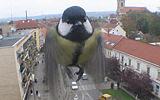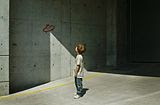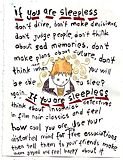What You Think Is What You Get
By Marianne Williamson
Author of the bestselling books The Age of Miracles and A Return to Love, Marianne Williamson discusses the power of thought and intention; is it really possible to use one's mind to turn dark thoughts into light?
It's so easy to believe that external things hold the power in life. We think money, or lack of it, determines our abundance; we think other people's behavior determines our happiness; we think success or failure, as the world defines it, determines our self-worth.
But it is ultimately our thinking, more than our outer circumstances, that determines whether we live lives of harmony and peace or of pain and despair. I have known healthy, wealthy people who were depressed, and people with critical illnesses who could honestly attest to joy.
A scientific worldview dominated Western civilization for centuries, pronouncing the external world the only "real" world. That which we can see, hear, touch, taste and feel was deemed reality, and the mind was thought to wield little or no power in either creating or transforming material circumstances.
In the past century this worldview began to change dramatically. In fact, it has been overthrown by science itself! Quantum physics and other cutting-edge theories show consciousness to be more than a mere witness to external events: It is now recognized for its role in causing and transforming events. As sages have proclaimed throughout the centuries, the world is but a reflection of what we think. As we change our thoughts, we can change our world.
In the realm of thought, there are two main categories: thoughts of love and thoughts of fear. Every single moment, we choose between the two. If I think with love, then I am more likely to behave lovingly and to attract love from others. If my heart is closed, I am more likely to act out of fear. Fear-based behavior tends not to look like fear but like anger or jealousy; it elicits reactions from others that reflect my fear and not my love.
Yet in any moment, we can change our minds. God created us to co-create with Him a world of harmony and peace and joy, which the love in our hearts gives us power to do. With every thought, we choose heaven on earth or hell on earth, for ourselves and for all the world. We have the power to bless or blame, to forgive or judge. With our thoughts we have the power to honor or mock, to believe in miracles or deny the possibility that they ever happen. When our minds move in harmony with love—through forgiveness or prayer or the simplest tender thought—then mountains move and the universe shifts.
Perhaps there is a situation in your life that causes you pain or anxiety, fear or grief. You can surround it in your mind with light and lift it up to God. Just that simple thought—that we take a situation of darkness and place it in the light, praying for God to do for us what we cannot do for ourselves—puts into motion a force for universal good. It is unstoppable and indestructible. It is a field of intention that all be loved. It is, in essence, the power of love itself. Think about that. And think about it some more. And then think about it some more. For as a woman thinketh, so she is....
More Marianne: The time that matters most
Tuesday, January 18, 2011
Thursday, January 13, 2011
the B_G talkies: my name is red
the B_G talkies: my name is red: "finishing my name is red by pamuk within two and a half days of fever has been quite an experience. well, there was the obvious nagging thou..."
Monday, January 10, 2011
Saturday, January 8, 2011
Lessons From a Snow Covered Drive
The Heart and Craft of Lifestory Writing
--------------------------------------------------------------------------------
Lessons From a Snow Covered Drive
Posted: 08 Jan 2011 02:19 PM PST
I look down the length of my snow covered drive and feel tired at the sight. I’m home alone this week, and the job is all mine, to do or ignore. The drive is 100 feet long, steeply sloping and wide. True, there are only three inches of fluffy snow. True, I could let it go, but it will only get worse if it snows more, which it probably will. True, I don’t have to do the whole thing. Even a little will be an improvement. I have no idea where to begin ... .
As you can see from the photo above (sorry, the pic didn't copy), I did finish, and in the process, I remembered several important lessons:
Let the project tell you how it wants to be done.
I paused at the bottom of the steps and listened. to my inner sense of things and to the driveway.“First things first,” I heard. “Shovel along the side so you can at least get down to the mailbox.” I did that. Then I heard “Do one scrape across the middle right there.” The next instruction was Now work your way down almost to the street. You can manage that.” Yes. I could manage that. I felt winded just shoveling the steps, but I knew that if I relaxed into it, I could do that much. I’m not that out of shape.
I steadily pushed the snow along, scraping it to the side. If only the paper delivery man had left it near the street instead of gallantly driving it up to the top. His tracks packed hard, sticking to the pavement. I moved to the top again and continued letting the driveway guide the process until I felt overheated and ravenous.
Take breaks when you need them.
I know better than to work to the point of total exhaustion. I came back in for lunch, rested, and returned to finish the job. The second half was easier. My muscles were loosened up, ready for work. I continued to proceed intuitively rather than trying to map out a plan.In a surprisingly short time, I was done.
Chunk it down
I didn't try to do the whole drive in one orderly process. The drive itself told me how to proceed, which parts to do for the biggest immediate impact, “in case I didn't finish.”
Know when to quit.
I started to work on those tracks. I started to clean along the street-side edge. That's nuts! I told myself. This is not a work of art. This is a functional driveway. The drive is not perfectly clear and bare, but I can drive up it with no problem. It works.
* * * * *
I think of my big writing projects, and how similar they are to shoveling the driveway. Any big project is. I never know exactly where to start, even if it's like a dozen others I've done. “Just start somewhere. Write something. And “let the project or story tell you how it wants to be written.” ”Strange as it sounds, that always works.
I chunk them into sections, break them down. I write a paragraph, write a page. I do what I can today, and take breaks when I tire. The vision of the end result always pulls me forward, no matter how huge the project. Most importantly, I know that no project is ever perfect. I have to know when I've given my best and it's time to move on.
The drive is cleared, scrape by scrape.
The book is written word by word.
The project will quickly be in shape
If that inner voice is gently heard.
This approach works for me, but it may not be perfect for you. The only right way to manage a creative project whether shoveling a drive, cleaning a closet or writing a book, is the one that works for you.
Write now: think of a big project you've undertaken. Write a few notes or an essay about the process. How did you go about it? Was it typical or different from other projects? What did you learn from it that will help you in the future? How can those lessons help you with your writing?
You are subscribed to email updates from The Heart and Craft of Life Writing
--------------------------------------------------------------------------------
Lessons From a Snow Covered Drive
Posted: 08 Jan 2011 02:19 PM PST
I look down the length of my snow covered drive and feel tired at the sight. I’m home alone this week, and the job is all mine, to do or ignore. The drive is 100 feet long, steeply sloping and wide. True, there are only three inches of fluffy snow. True, I could let it go, but it will only get worse if it snows more, which it probably will. True, I don’t have to do the whole thing. Even a little will be an improvement. I have no idea where to begin ... .
As you can see from the photo above (sorry, the pic didn't copy), I did finish, and in the process, I remembered several important lessons:
Let the project tell you how it wants to be done.
I paused at the bottom of the steps and listened. to my inner sense of things and to the driveway.“First things first,” I heard. “Shovel along the side so you can at least get down to the mailbox.” I did that. Then I heard “Do one scrape across the middle right there.” The next instruction was Now work your way down almost to the street. You can manage that.” Yes. I could manage that. I felt winded just shoveling the steps, but I knew that if I relaxed into it, I could do that much. I’m not that out of shape.
I steadily pushed the snow along, scraping it to the side. If only the paper delivery man had left it near the street instead of gallantly driving it up to the top. His tracks packed hard, sticking to the pavement. I moved to the top again and continued letting the driveway guide the process until I felt overheated and ravenous.
Take breaks when you need them.
I know better than to work to the point of total exhaustion. I came back in for lunch, rested, and returned to finish the job. The second half was easier. My muscles were loosened up, ready for work. I continued to proceed intuitively rather than trying to map out a plan.In a surprisingly short time, I was done.
Chunk it down
I didn't try to do the whole drive in one orderly process. The drive itself told me how to proceed, which parts to do for the biggest immediate impact, “in case I didn't finish.”
Know when to quit.
I started to work on those tracks. I started to clean along the street-side edge. That's nuts! I told myself. This is not a work of art. This is a functional driveway. The drive is not perfectly clear and bare, but I can drive up it with no problem. It works.
* * * * *
I think of my big writing projects, and how similar they are to shoveling the driveway. Any big project is. I never know exactly where to start, even if it's like a dozen others I've done. “Just start somewhere. Write something. And “let the project or story tell you how it wants to be written.” ”Strange as it sounds, that always works.
I chunk them into sections, break them down. I write a paragraph, write a page. I do what I can today, and take breaks when I tire. The vision of the end result always pulls me forward, no matter how huge the project. Most importantly, I know that no project is ever perfect. I have to know when I've given my best and it's time to move on.
The drive is cleared, scrape by scrape.
The book is written word by word.
The project will quickly be in shape
If that inner voice is gently heard.
This approach works for me, but it may not be perfect for you. The only right way to manage a creative project whether shoveling a drive, cleaning a closet or writing a book, is the one that works for you.
Write now: think of a big project you've undertaken. Write a few notes or an essay about the process. How did you go about it? Was it typical or different from other projects? What did you learn from it that will help you in the future? How can those lessons help you with your writing?
You are subscribed to email updates from The Heart and Craft of Life Writing
Wednesday, January 5, 2011
Subscribe to:
Posts (Atom)









